How to Master the Product Sense Interview
Keen to master the product sense interview? Doing so will help improve your chances of bagging your next role. See, the Product Management interview process can be a grueling one, no matter where you’re applying to. As a PM, you probably know that already. You’re often facing unorthodox questions that often put you on the spot, you’re tackling multiple stages, and you’re up against a hell of a lot of competition.
If you’re aiming to secure a role at one of the big tech players – the likes of Meta, Microsoft, Amazon, and others – then you may have to tackle a specific interview stage: the product sense interview.
This is a phase in the selection process where hiring managers look to get an idea of your thinking process, and do that by asking you to come up with creative – and good – product solutions on the spot.
Sounds challenging right? Well, that’s because it’s designed to be.
Thankfully, if you have the right tools and preparation, you can turn this dreaded interview into an opportunity to sell yourself, your skills, showcase your process, and stand out from the crowd.
Here’s a look at how you can master the product sense interview.
What is product sense?
Product sense can be thought of as a characteristic PMs should have, a mindset that you need to develop, or one of many Product Manager skills that you should look to improve.
Product sense is a way to describe how you think about Product Management and the way you tackle problems. If someone is really thoughtful when coming up with product solutions, thinking about customers, the market fit, constraints, pain points, technical feasibility, and more, then we’d say that individual has good product sense.
If you want to get more metaphorical with it, product sense is a PM’s internal compass that guides product decisions.
There are a number of fundamental elements of product sense that a product sense interview looks to assess:
- User empathy – You need to be empathetic to users’ real problems. This means you are intensely curious about how they behave, think, and feel. Having good product sense means you can anticipate what users actually need.
- Problem-first mindset – Instead of jumping to solutions, a person with a strong product sense looks to clarify a problem and see if it’s the right problem to solve.
- Holistic thinking – A person with a good product mindset is able to take a step back and think about feasibility and the business perspective when coming up with solutions.
- High-quality standards – PMs with great product sense hold their work to high standards. They spot usability snags others miss, like confusing microcopy or clunky onboarding flows, and won’t settle for “good enough.”
- Decision-making skills – At the heart of product sense lies the ability to juggle trade-offs effectively. Which features or improvements matter most right now? How do you balance immediate wins with long-term strategy? Strong PMs don’t get lost in analysis paralysis – they make informed decisions confidently while staying open to iteration and feedback.
At its core, product sense is about seeing the full picture. It means quickly identifying user pain points, understanding what makes a solution both effective and delightful, and balancing competing demands from users, business goals, and technical realities. It’s like having a finely tuned radar for what works and what doesn’t.
You first need to master product sense before you can master the product sense interview. It’s a key characteristic that hiring managers are looking for, which is why many companies are holding specific interview stages to assess your product sense ability.
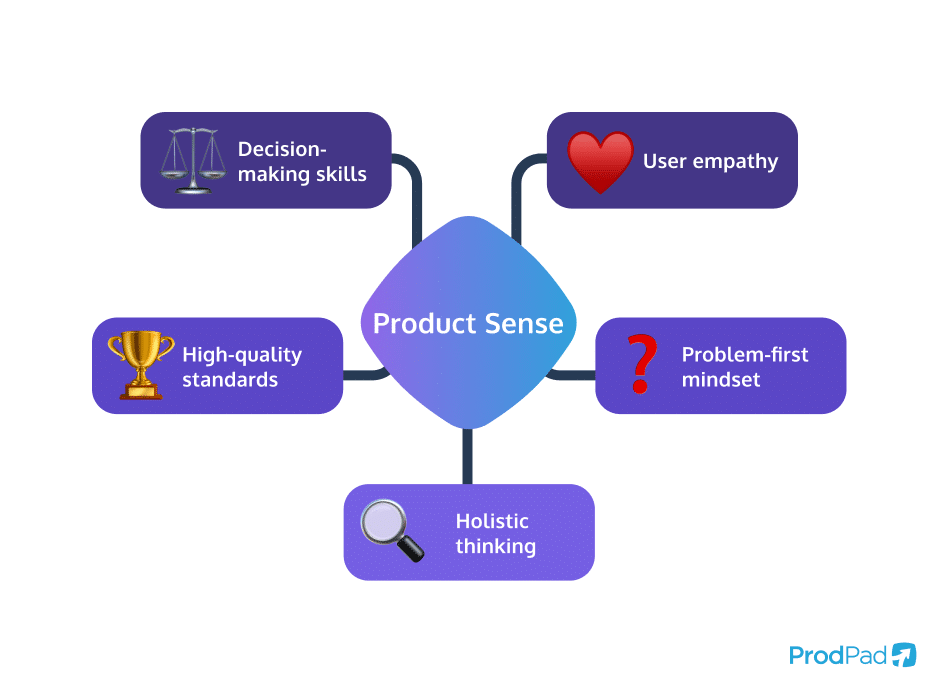
What is a product sense interview?
It will come as no surprise – now you understand what product sense is – that a product sense interview is an interview used to assess a candidate’s acumen when it comes to product sense.
Increasingly these specific and distinct hiring stages are being introduced to the interview process to provide a focused hour (or thereabouts) to delve into your approach to product management and the process you follow when devising a product strategy.
Whereas other interview stages might focus on the experience you’ve listed on your resume, a product sense interview is a chance to explore often hypothetical product situations and demonstrate your product management approach by applying it to a conceptual scenario.
These interviews are notoriously daunting for the Product Manager candidates that face them, since it’s hard to prepare for these unknown theoretical scenarios. However, that’s not to say you can’t practice how you’d approach this and master the product sense interview.
How important is the product sense interview?
If you ask the top tech companies using a product sense interview to evaluate product sense, they’ll tell you that it’s very important. And if you ask the PMs being interviewed in a product sense interview looking for their next job, they’d answer very, very important. So you DO want to master the product sense interview – put it that way.
Companies using the product sense interview want to learn about the way you think about the product and your approach to Product Management. And PMs going into this interview stage want to get past it to increase their chances of landing the role.
However, we’d argue that interviewers should constantly be trying to gauge a candidate’s product sense at all phases of the hiring process, not just this specific stage. It is one of the most valued skills hiring managers look out for, according to a survey conducted by our friend Lenny Rachitsky over on his Product Management newsletter.
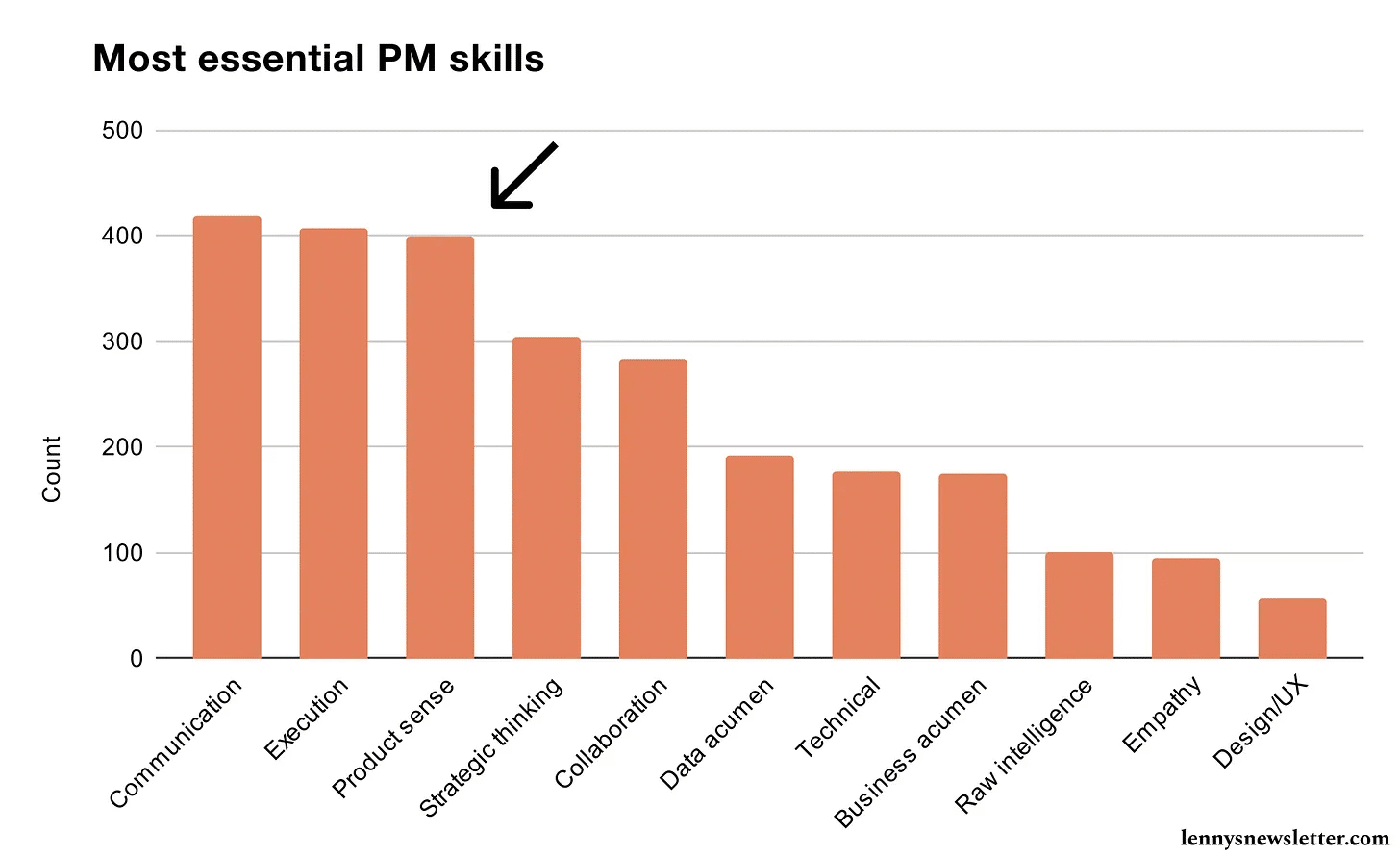
Source: https://www.lennysnewsletter.com/p/product-management-survey
So, as an interviewer, our advice would be to not just squeeze all your product sense questions into this one focused interview stage, but integrate questions on it throughout the entire process, making it more natural and less forced. Otherwise, the criticism here is that the product sense interview can become a bit of a performance. Not as much of a test of their genuine product sense, but more delivery of a scripted and rehearsed performance.
“We don’t have a formal ‘product sense interview’ stage as such. Instead, we find this out by asking about past situations candidates have been in and have them walk us through how they think, work, behave, and react.
We’re trying to find the same information as you would in a product sense interview but integrated more in all phases of the process. We’re trying to find out how PM candidates break down problems, gather user and customer feedback, prioritize issues and solutions, iterate on these solutions, and measure outcomes.
Whether that’s discovered in a product sense interview or just a regular old product interview, as a candidate, you’ll want to understand what product sense is and how to demonstrate that you have it.”
Janna Bastow, ProdPad CEO & Co-Founder
But we get it. Sometimes you just have to play the game. Product sense interviews aren’t going away. So here are some tools and things you need to know to make sure you can master this often nail-biting interview stage.
What should you expect in a product sense interview?
A product sense interview temporarily puts you into the shoes of a PM working at the company you’re interviewing for. Here you’re going to be asked to solve questions about the product.
These questions are hypothetical but will have you thinking about the company and its product, the market it’s in, its customers, and the potential problems it has.
If you’re to master the product sense interview, don’t think that you can get this interview done and dusted in five minutes. It’s not a quick-fire Q&A. You should expect to provide a deep dive into your process, going into detail for around an hour exploring how you approach problem-solving.
An interviewer will be very disappointed if all you do is provide an answer without discussing how you got there. The whole point of this interview is to see your reasoning, so make sure you’re prepared to go over every step of your decision-making process.
So what exactly are interviewers looking for? Well, they want to see you demonstrate product sense, meaning they want to clearly see that you’re thinking about and being empathetic to users, that you have strong problem definition, have intuitive design standards, and that you can think strategically. They want to see how good you are at identifying problems worth solving.
Now don’t expect to have all the answers to these product sense questions. End of the day, you’re not a PM at the company – not yet. You don’t have the product research and knowledge to leverage, so don’t sweat it if you feel like there’s a knowledge gap. What you should focus on is showing your clear process and approach to solving the problem and question laid out in front of you.
Here’s a look at what some of those questions can look like:
Example product sense interview questions
In a product sense interview, you’re going to be asked questions that try to uncover how you think about products and what you value in good products. These could be simple questions explaining what your favorite product is, or more in-depth questions about how you would improve an existing product or launch a new one.
More often than not, the questions you face are going to be directly related to the company you’re applying for.
Interviewing for Meta? They may ask you about how to improve Facebook Marketplace. Looking for a role at Google? They may have you invent a new Google Maps feature.
Therefore, to master the product sense interview you need to make sure you’ve done a lot of research on the company, product and market for the organization you’re interviewing for. Find out what they do, who their users are, and what their competitors look like. Basic interview prep.
Here are some product sense interview questions you can expect to see. Feel free to tweak these to match the company and product you’re applying to work with and get practicing!
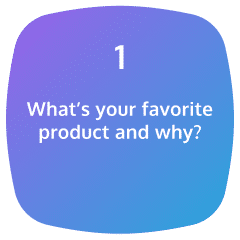
This question reveals how you think about the products you love, helping the interviewer assess your understanding of good design, user experience, and value delivery. They’re looking for insight into your product intuition and ability to share why a product works well or resonates with users.
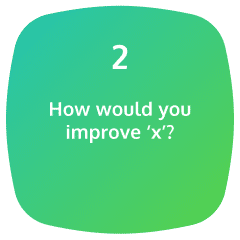
This question tests your ability to identify pain points and opportunities for enhancement in an existing product. The interviewer wants to see your problem-solving process, creativity, and focus on user needs.
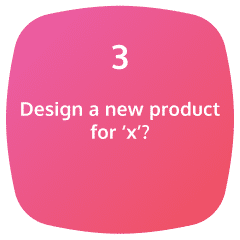
This evaluates your ability to think from scratch, considering factors like market fit, user needs, and innovation. Interviewers are assessing how you balance feasibility, creativity, and practicality in designing solutions.
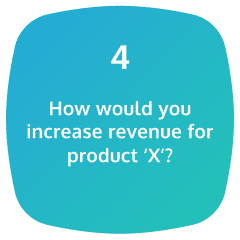
This tests your understanding of business strategy and how products drive value. Interviewers want to see your ability to identify revenue opportunities, such as improving features, product pricing strategies, or targeting new customer segments.
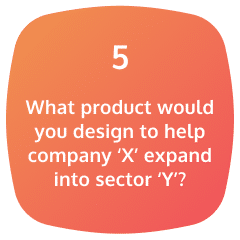
This challenges you to think strategically about entering new markets. The interviewer wants to see how well you understand market dynamics, user needs, and the company’s capabilities, and how you craft a solution aligned with their goals.
How do you answer a product sense interview question?
When answering a product sense interview question, remember that the interviewer isn’t too interested in your final answer. Instead, they’re more focused on how you got to that final answer. They want to see how your product brain works, how you think, and how you tackle problems.
Essentially, it’s showing your working out that;s important. Like in a maths exam..
To help you master the product sense interview, there are many frameworks you can follow. These frameworks help you structure your response and make sure that you’re not missing anything important when delivering your answers.
Here’s a look at the three best known frameworks for this job.
CIRCLES Method
The CIRCLES method is a popular framework for tackling product questions and challenges. Designed by Lewis C. Lin, it ensures you consider all the critical aspects of creating a solution when faced with a product sense interview question, giving you a structured approach to delivering your answer.
Originally introduced to help candidates answer product sense interview questions, the CIRCLES method has since become a go-to Product Management framework for problem-solving in general. It’s a step-by-step guide that keeps customer needs and strategic thinking at the forefront of every decision.
But why is it called CIRCLES? Because it’s an acronym for these seven steps:
- Comprehend the situation 🤔 – Grasp the problem space.
- Identify the customer 🔎 – Define who you’re building for.
- Report the customer’s needs 🗣️ – Outline their pain points.
- Cut with prioritization ✂️ – Focus on what matters most.
- List solutions 💡 – Brainstorm ideas.
- Evaluate tradeoffs ⚖️ – Consider pros and cons.
- Summarize recommendations ✍️ – Present a clear plan.
C-I-R-C-L-E-S. Circles. By following these steps, Product Managers can ensure that they’re considering every critical factor when answering product sense questions, making better decisions with confidence and clarity.
STAR framework
The STAR ⭐ framework is a versatile tool to structure your answers during a product sense interview. Whether you’re tackling questions about product strategy, design, or improvement, STAR helps you focus on clarity and results.
- Situation: Start by setting the stage. Describe the context or problem you were facing, ensuring it’s relevant and easy to understand.
- Task: Define your specific role or objective in addressing the situation. What was the goal you needed to achieve?
- Action: Highlight the steps you took to tackle the problem. Be concise but include enough detail to showcase your process and reasoning.
- Result: End with impact. Share the outcome of your actions, tying it back to measurable success, such as improved metrics, customer satisfaction, or strategic wins.
By breaking your answer into these four parts, you show a clear, results-driven approach – exactly what interviewers want to see.
BUS framework
The BUS framework is your roadmap for addressing improvement questions in product sense interviews. It helps you balance the needs of the business with solving real user problems, resulting in well-rounded solutions.
The anagram helps you focus on:
- Business Objectives: Start by identifying the company’s North Star metric. Are they focused on growth, revenue, retention, or market expansion? Aligning with these priorities shows strategic thinking.
- User Problems: Shift the spotlight to the users. What are their pain points or unmet needs? A strong answer connects these challenges to the business context.
- Solutions: Bring it all together by proposing practical, innovative solutions that address user problems while advancing business objectives. Bonus points for discussing tradeoffs and prioritization!
Using BUS helps you demonstrate that you’re not just a user advocate but also a strategic thinker who understands the bigger picture – a key trait for any Product Manager.
What do exceptional product sense interviewees do?
If you’re really keen on the job you’re applying for, you don’t just want to pass a product sense interview, you want to excel in it. You want to stand out and put a spotlight on yourself and become the PM they just can’t stop thinking about.
Well, how do you do that?
For starters, you need to make sure you have a well-structured response, using one of the frameworks we’ve just spoken about, but you also need to show a few other traits and signs that you’re da bomb.
Here are some things that FAANG hiring manager Itai Leibowitz thinks demonstrate exceptional product sense:
You are specific
Your answers go beyond vague goals like “saving time and money” to address the case directly. For example: “This helps parents streamline their rush-hour commutes” or “It makes 1:1 reviews more effective for managers.”
You are creative
You think outside the box, offering unique solutions and ideas that most others wouldn’t consider. Your originality makes your responses stand out.
You are clear
Your communication is structured and concise, ensuring your thought process is easy to follow. For example: “I’d prioritize three customer segments and two stakeholder types. Here’s the order of importance: …”
You are attentive
You listen carefully, ensuring you fully understand the case and the question. You ask clarifying questions, check for alignment, and adapt when you notice you’re off track or rambling.
You are curious
You approach each question with enthusiasm and a prepared mindset. Instead of feeling pressured, you see challenging cases as opportunities to explore and discuss interesting problems.
If you want a peek behind the curtain, many hiring managers conducting a product sense interview will assess you based on certain skills that you display with your answer. If you want to give an exceptional interview response, these are some of the skills you’re likely being assessed on, so make sure you’re showcasing them:
- Business acumen – Show that you understand how your decisions tie back to the company’s goals, whether it’s driving revenue, cutting costs, or creating new opportunities.
- User-centricity – Demonstrate your ability to think from the user’s perspective, addressing their needs, pain points, and motivations in your solutions.
- Product vision – Highlight your ability to see the bigger picture and imagine how a product can evolve to meet future needs or create new value.
- Clarifying questions – Yes, many interviewers want you to ask clarifying questions as it shows you’re keen to learn more about the problem before you find your solution.
- Tradeoffs and errors – Interviewers are keen to see if you’re thinking about tradeoffs and other potential issues in your solutions.
- Passion and creativity – Your enthusiasm and ability to think outside the box can set you apart, showcasing your unique perspective and energy for the role.
- Communication – Clear and structured communication demonstrates your ability to convey ideas effectively, making it easier for teams and stakeholders to align with your vision.
- Collaboration – Show you can work well with others by emphasizing how you’d engage stakeholders, gather input, and build consensus around your ideas.
Common product sense interview mistakes
Product sense interviews can be nerve-wracking, and because of this, it can be easy to panic and mess up. Many PMs feel like this interview trips them up the most. So what are people doing that leads them to get that unwanted rejection email?
Here are some of the most common mistakes you can make in a product sense interview. Try and avoid these, and you’ll increase your chances of making it through.
Going straight to the solution
You’ll never master the product sense interview if you’re not willing to show your working out. You may as well shake the interviewer’s hand, turn around, and walk out the door. You’ll never wow the interviewer that way, even if your idea is novel, because it looks like it’s been plucked out of thin air.
Articulate your thought process and make sure the interviewer knows why your idea is a viable solution. It’s like in math. You need to show how you get to a solution. That’s the sign of a good mathematician, not that you simply memorized the answer.
Not segmenting users or product types
You can’t create a product or feature that works for everyone, yet many PMs get caught out by trying to do exactly that in product sense interviews. It’s common to be asked a question like “Design a feature to help us enter the fitness industry.”
Now if Meta asked you that, one of the first things you’ll need to do is clarify if that’s for Facebook, Instagram, WhatsApp, etc. What product do they want you to focus on? Knowing this will completely change your response.
Furthermore, the types of users in the fitness industry are diverse and large. You can’t put them all in the same pot. You’ll need to think about the segmentation within that sector and consider the pain points and needs of certain users in that audience. These factors will influence your product design and can be easily overlooked if not explicitly considered.
Boxchecking answers
Here’s one of the biggest things that drives product sense interviewers mad: an answer that sounds more like a scripted performance than a genuine thought process. Often, this happens when candidates cling too tightly to frameworks, treating them as rigid checklists rather than flexible tools.
While frameworks are fantastic for structuring your thoughts and providing support, over-relying on them can make your answers feel robotic and predictable. Interviewers don’t want to hear a textbook recital – they want to see how you think, adapt, and problem-solve.
If sticking to the framework feels unnatural or forces you into awkward phrasing, don’t be afraid to stray from it. Frameworks are there to guide, not dictate. The goal is to use them as a launchpad for your ideas, not a cage that limits your creativity.
Loosen up, make it your own, and focus on delivering a thoughtful, human response that showcases your unique perspective.
Common sense for Product Managers
Product sense can often be described as common sense for Product Managers. Just like how it’s common sense to not walk into traffic without looking both ways, it’s good product sense to not create a list of solutions without considering the pain points of your audience.
Demonstrating good product sense essentially demonstrates that you’re a good Product Manager. That you’re thinking about the right things and are considering the key factors when building solutions and products and more.
Product sense isn’t something that you should focus on just to master the product sense interview. No, this is a skill that you’ll want to develop your entire career, as being able to operate with this best practice mindset is going to undoubtedly make you a better Product Manager.
Who doesn’t want to be better at what they do?
Well, with ProdPad, we have built-in tools and prompts to make sure that you’re using our features in the best way possible. Be it tips and frameworks that best suit our roadmapping tool, or our AI CoPilot built specifically for Product Management, we’ve designed our tools in a way where you’re always following best practices. This makes your roadmaps, feedback tracking, and idea management as effective as possible.
For PMs who want to improve their output, ProdPad is a no-brainer. Give us a go today for free. We’re sure you’ll love it.
Try ProdPad for free. Start a trial
The breakdown of product sense is spot on! To make a strong impression in a product sense interview, candidates could tie their answers back to real-world experiences, showcasing how their product sense has led them to make effective decisions in past roles.